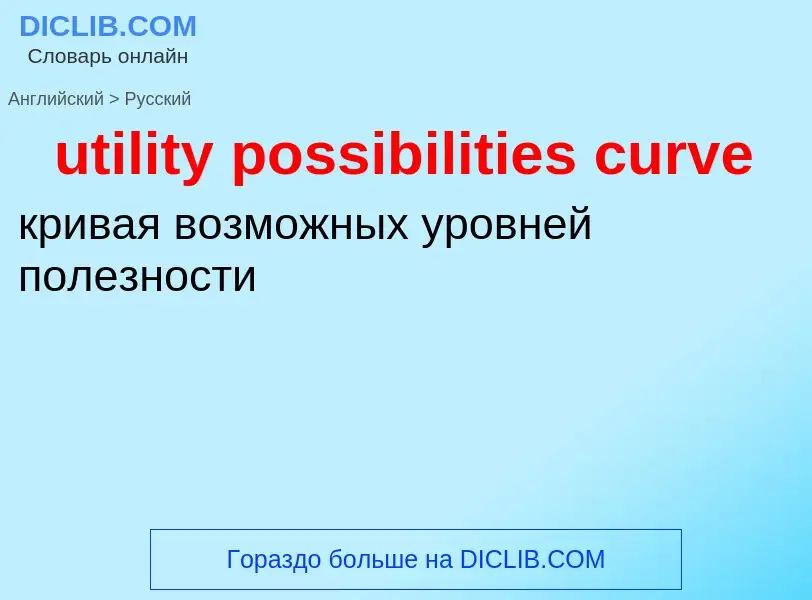Vertaling en analyse van woorden door kunstmatige intelligentie
Op deze pagina kunt u een gedetailleerde analyse krijgen van een woord of zin, geproduceerd met behulp van de beste kunstmatige intelligentietechnologie tot nu toe:
- hoe het woord wordt gebruikt
- gebruiksfrequentie
- het wordt vaker gebruikt in mondelinge of schriftelijke toespraken
- opties voor woordvertaling
- Gebruiksvoorbeelden (meerdere zinnen met vertaling)
- etymologie
utility possibilities curve - vertaling naar russisch
общая лексика
граница возможного выпуска продукции
Definitie
Wikipedia
In economics, an indifference curve connects points on a graph representing different quantities of two goods, points between which a consumer is indifferent. That is, any combinations of two products indicated by the curve will provide the consumer with equal levels of utility, and the consumer has no preference for one combination or bundle of goods over a different combination on the same curve. One can also refer to each point on the indifference curve as rendering the same level of utility (satisfaction) for the consumer. In other words, an indifference curve is the locus of various points showing different combinations of two goods providing equal utility to the consumer. Utility is then a device to represent preferences rather than something from which preferences come. The main use of indifference curves is in the representation of potentially observable demand patterns for individual consumers over commodity bundles.
There are infinitely many indifference curves: one passes through each combination. A collection of (selected) indifference curves, illustrated graphically, is referred to as an indifference map. The slope of an indifference curve is called the MRS (marginal rate of substitution), and it indicates how much of good y must be sacrificed to keep the utility constant if good x is increased by one unit. Given a utility function u(x,y), to calculate the MRS, we simply take the partial derivative of the function u with respect to good x and divide it by the partial derivative of the function u with respect to good y. If the marginal rate of substitution is diminishing along an indifference curve, that is the magnitude of the slope is decreasing or becoming less steep, then the preference is convex.



